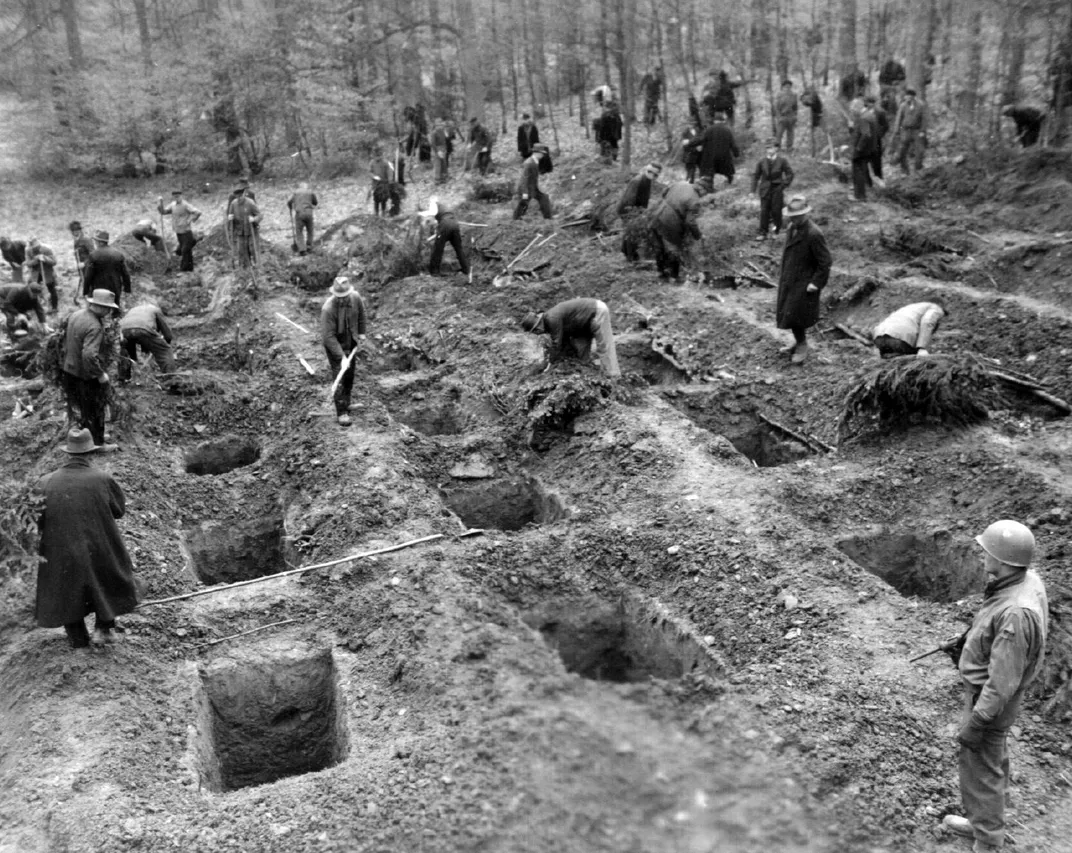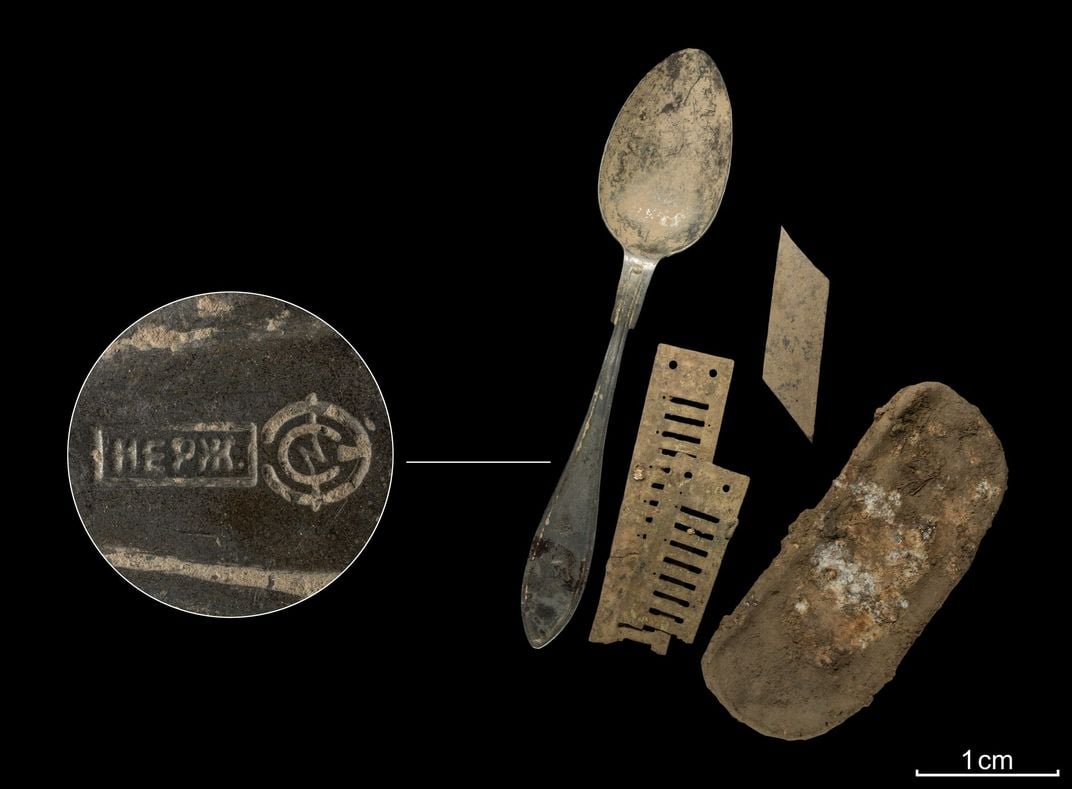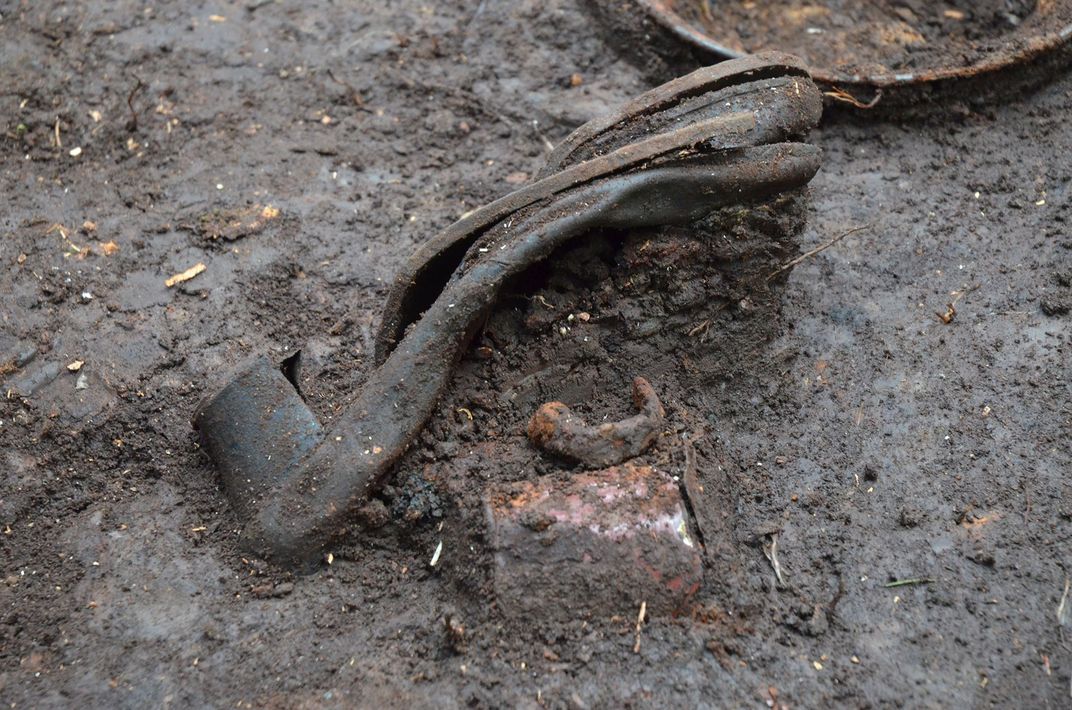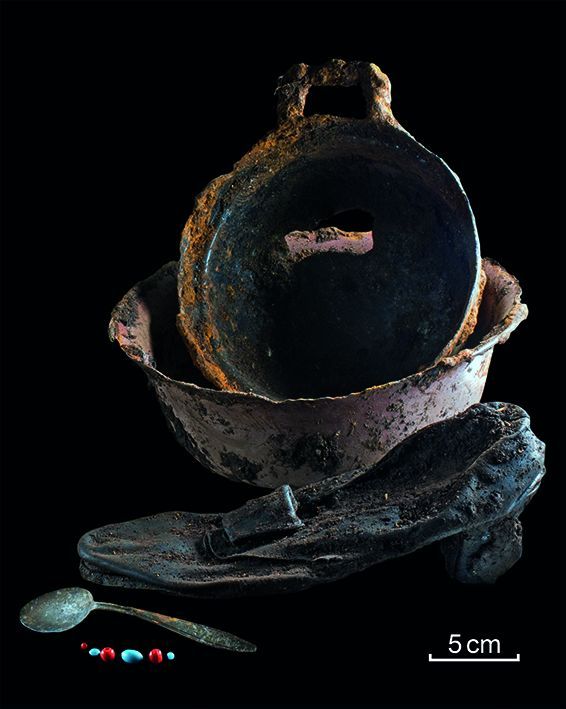400 Artifacts Unearthed at Site of Nazi Massacre Targeting Polish, Soviet P.O.W.s
In March 1945, German soldiers shot 208 Polish and Soviet forced laborers in a series of three mass executions across the Arnsberg Forest
A prayer book, harmonica and glasses case are among the 400 or so artifacts recently recovered from the site of a World War II-era massacre in Germany’s Arnsberg Forest.
As George Dvorsky reports for Gizmodo, archaeologists from the country’s Westphalia-Lippe region announced the discovery during a press conference last Friday. The items, excavated in late 2018 and early 2019, date to March 1945, when soldiers from Nazi Germany’s Waffen-SS and Wehrmacht divisions murdered 208 Polish and Soviet forced laborers.
The killings took place at three locations across Arnsberg between March 20 and 23. According to a statement by the archaeologists, the first massacre was carried out in the Langenbach Valley near the town of Warstein. Nazi troops marched 71 prisoners, including 60 women, 10 men and one child, into the forest, telling them to leave their belongings and clothing by the side of the road for later retrieval. Upon arriving at a stream escarpment, Deutsche Welle notes, the unsuspecting victims were shot by firing squads.
The majority of artifacts unearthed by excavators were found at the site of this first mass killing. Although the Nazis robbed the murdered workers of most of their paltry possessions—the soldiers pocketed all of their victims’ cash, then redistributed their clothing to German locals—some were left behind.
As the archaeologists’ statement remarks, these abandoned items not only “testify to the last hours in the life of the murdered, but also provide information about the course of the cruel deeds.” Personal belongings such as a Polish dictionary, shoes, clothing adorned with colorful beads and buttons, cutlery, and crockery spent nearly 75 years hidden alongside evidence left by the perpetrators: bullets, cartridge cases, even the shovels used to bury victims.

A second site, located at Suttrop near Warstein, yielded fewer artifacts, suggesting the soldiers who led the mass execution were better-prepared to cover traces of their actions. According to DW, the massacre found 57 laborers forced to dig trenches, laid out in a zigzag pattern, that would soon serve as their own graves.
The third massacre took place in Eversberg, near the town of Meschede. The killers used grenades to carve out a deep pit, then shot the 80 victims in a manner that ensured their bodies fell into the cavity. Later, the mass burial site was concealed under a cow paddock.
Unlike the Langenbach and Suttrop sites, which were found by advancing Allied soldiers shortly after the massacres, the third grave remained unknown until November 1946, when an anonymous informant alerted British troops to its existence. The Eversberg victims were exhumed in March 1947 and re-interred at Meschede’s Fulmecke Cemetery alongside the previously discovered victims, who had been exhumed and shown to German locals as evidence of Nazi atrocities before finally being laid to rest.
Archaeologists recovered around 50 artifacts, including a harmonica, Soviet coins and a comb stand, from the Eversberg site. Although the Nazis likely viewed these items as worthless, the archaeologists note that “for the forced laborers, … these pieces probably represented valuable memories of their homeland.”
To date, only 14 of the 208 massacre victims have been definitively identified. As expert Marcus Weidner tells Heinrich Buttermann of local news outlet WDR, “Nobody knows who was shot here—and nobody wanted to know that for a long time.”
Still, the archaeological investigation currently underway, as well as a renewed push for genealogical study, could help researchers identify more of the currently anonymous victims and perhaps even reveal their fates to living descendants.
The work also serves as further testament to the atrocities of the Nazi regime. As DW reports, the project, in part, intentionally “sought to thwart current far-right downplaying of Germany's Nazi past.”
“These murders are part of our history that we must own up to,” Regional Westphalia-Lippe executive head Matthias Löb told the outlet.
/https://tf-cmsv2-smithsonianmag-media.s3.amazonaws.com/accounts/headshot/mellon.png)




/https://tf-cmsv2-smithsonianmag-media.s3.amazonaws.com/accounts/headshot/mellon.png)